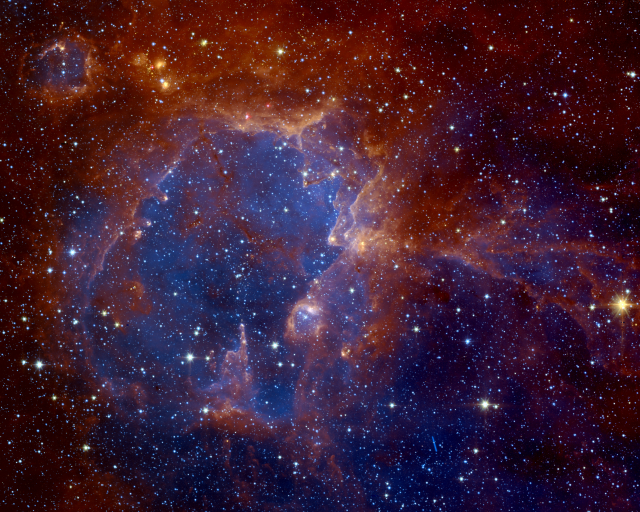Colin Gum
There are many astronomers who have contributed to our knowledge of the Milky Way over the past hundred years but for me one of the most fascinating is Colin Stanley Gum.
Gum is perhaps most famous for his discovery of the Gum Nebula, a vast expanse of nebulosity that may be one of the closest supernova remnants to our solar system. The Gum nebula is just one of 85 nebular complexes catalogued in Gum's pioneering catalog of HII regions visible in the southern Milky Way. Gum was also an early leader in the field of radio astronomy and his top rate mathematical skills played an important part in determining the exact location and orientation of the galactic plane and centre and in determining the current system of galactic coordinates.
For me, the most fascinating part of Gum's story was his persistence despite a lack of equipment and support from the management of the Stromlo observatory where he worked. His thesis advisor, Clabon "Cla" Walter Allen, left for a new position at University of London Observatory, and the Stromlo director, Richard Woolley, had little interest in his work and at one point even attempted to reject his thesis and deny him a PhD. If it had not been for the intervention of Ben Gascoigne as described here, Woolley might have succeeded in terminating the career of one of Australia's most prominent astronomers.
There are tiny details that suggest a dramatic story but these are mostly tantalising hints. Gum reported that the nebular spectrograph originally used by Gum and Allen was destroyed by one of Stromlo's periodic forest fires, and he was forced to depend entirely upon tiny photographs from a 100 mm (4 inch) Schmidt camera salvaged from the flames. Gascoigne mentioned that Gum "had to go into hospital for medical treatment" after he had written his thesis and there is a reference in a Stromlo history that this was because of a "nervous breakdown". This is a rather vague term. Perhaps it was clinical depression? In any case, Gum was able to recover from the incident and continue his career.
I came across some biographical details today that make Gum's story even more poignant: this genealogical data shows that Gum's father, Stanley Sturt Edgar Gum, died the year his son was born.
Curiously, I have not been able to find a single photograph of Colin Gum on the Internet, but since his father served in the Australian infantry during the first World War, Stanley Sturt Edgar Gum's portrait can be found here.
I wish that someone would write the biography of Colin Gum that he so richly deserves. I think that his enormous achievements despite immense obstacles would be a great inspiration for many young scientists today.
An important part of a Gum biography would be his relationships with the two Stromlo directors during his all-too-short career: Richard Woolley and Bart Bok.
Richard van der Riet Woolley was best known for his sarcastic sense of humour and his sometimes spectacularly bad scientific and technical judgement. In 1947, when asked where he thought radio astronomy would be in 10 years, his response was "forgotten". He also remarked that the idea of space travel was "utter bilge" and wrote that "The whole procedure [of shooting rockets into space]...presents difficulties of so fundamental a nature, that we are forced to dismiss the notion as essentially impracticable".
It is odd that Bart Bok asked Gum's younger colleague Alex Rodgers to lead the effort to create an expanded version of Gum's catalogue, which became the RCW catalogue. Gum's equivalent in the northern hemisphere, Stewart Sharpless, produced an expanded version of his own original catalogue. Why was Gum not asked to do the same? Perhaps Gum himself wanted to move on to other projects? Certainly Bok's respect for Gum's scientific credentials seems clear from Bok's moving obituary for Gum, published after Gum's tragic death in a Swiss skiing accident in 1960.


